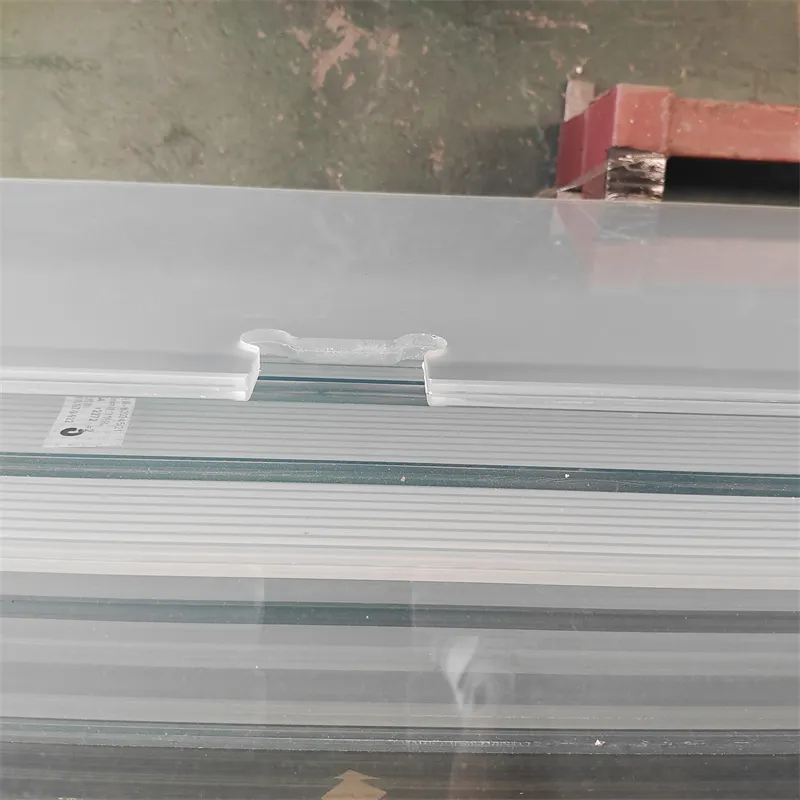Nov . 12, 2024 08:12 Back to list
transparent reflective glass
The Versatility of Transparent Reflective Glass
In the realm of architecture and design, materials are key to both aesthetic appeal and functional performance. One material that has gained significant attention in recent years is transparent reflective glass, a remarkable innovation that merges beauty with utility. This type of glass, which combines transparency with a reflective quality, serves as a striking medium for various applications, from buildings to interior spaces.
Understanding Transparent Reflective Glass
Transparent reflective glass is produced using a special coating that allows it to reflect sunlight while still maintaining a clear view through it. This dual functionality is achieved through a process called vacuum coating, where a thin layer of metal, usually silver or aluminum, is applied to the glass surface. This metal layer is responsible for the reflective properties, while the glass remains clear, enabling light transmission. The result is a surface that can reflect harsh sunlight, reduce glare, and significantly control heat gain, all while allowing for visibility.
Aesthetic Appeal
One of the most compelling features of transparent reflective glass is its aesthetic appeal. The reflective surface adds a touch of elegance to buildings and structures, creating a contemporary look that resonates with modern design principles. As sunlight hits the glass, it creates intriguing visual effects, reflecting the environment and changing with the time of day. This interaction with light makes buildings more dynamic and visually engaging, enhancing their overall character.
Moreover, transparent reflective glass can serve to blend structures into their surroundings. By reflecting the colors and shapes of the landscape or cityscape, it can create the illusion of continuity between the built environment and nature, making it an ideal choice for buildings situated in picturesque locations.
Energy Efficiency
Beyond its beauty, transparent reflective glass contributes significantly to energy efficiency. The reflective properties of the glass help to reduce cooling costs by reflecting solar heat away from the building. This means that during hotter months, buildings can maintain a cooler interior environment, which reduces the reliance on air conditioning systems. Consequently, this not only lowers energy bills but also lessens the carbon footprint associated with energy consumption.
transparent reflective glass

In colder months, while reflective glass primarily guards against heat gain, it can be combined with other technologies such as double glazing to enhance thermal insulation. Such combinations can lead to a more controlled indoor climate year-round, promoting sustainability in design.
Applications in Architecture
The applications of transparent reflective glass in architecture are diverse. Skyscrapers often utilize this material to create stunning façades that both captivate onlookers and integrate energy efficiency into their designs. Residential buildings also benefit from this glass, allowing homeowners to enjoy natural light while minimizing outdoor noise and glare.
In addition to exteriors, transparent reflective glass is increasingly being used in interior spaces. It can separate areas while maintaining an open feel, allowing light to flow throughout a room. It is ideal for offices, where it can enhance communication by visually connecting spaces without sacrificing privacy.
Challenges and Considerations
Despite its many benefits, the use of transparent reflective glass is not without challenges. One consideration is the potential for excessive reflection, which can lead to uncomfortable glare both for building occupants and those in the vicinity. Moreover, the reflective nature of the glass can cause issues with bird strikes, impacting local wildlife. Addressing these challenges requires careful design consideration and the use of specialized coatings that mitigate glare and provide bird-friendly solutions.
Conclusion
Transparent reflective glass stands out as a multifunctional material that encapsulates the spirit of modern design and architecture. Its blend of aesthetic charm and energy efficiency makes it a popular choice among architects and designers worldwide. As technology advances, the potential for this remarkable material will undoubtedly expand, paving the way for innovative applications that harmonize beauty, functionality, and sustainability in our built environment. Through informed design, transparent reflective glass has the power to transform not just structures, but also the experiences of those who inhabit them.
-
Safety and Style with Premium Laminated Glass Solutions
NewsJun.24,2025
-
Reinvents Security with Premium Wired Glass
NewsJun.24,2025
-
Premium Float Glass Line for Modern Architecture
NewsJun.24,2025
-
Low Emissivity Glass for Energy-Efficient Architecture
NewsJun.24,2025
-
High-Performance Insulated Glass Solutions for Modern Architecture
NewsJun.24,2025
-
Elevates Interior Style with Premium Silver Mirror
NewsJun.24,2025
Related PRODUCTS














